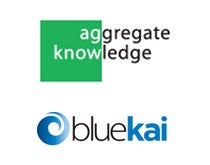 Aggregate Knowledge announced that it has adopted “BlueKai‘s new server-to-server data transfer technology, which greatly increases the efficiencies in which BlueKai data is transferred and delivered for ad campaign targeting and optimization within the AK Discovery Platform.” Read more.
Aggregate Knowledge announced that it has adopted “BlueKai‘s new server-to-server data transfer technology, which greatly increases the efficiencies in which BlueKai data is transferred and delivered for ad campaign targeting and optimization within the AK Discovery Platform.” Read more.
Pascal Bensoussan, VP of Products at Aggregate Knowledge, an audience management and real-time ad optimization platform, discussed the new alliance and what it means.
AdExchanger.com: How does “server-to-server data transfer technology” work? Can you compare it to the previous way you were working with BlueKai and show the key differentiators?
PB: The prevalent method for cookie pooling is based on using an image pixel, placed on a web page, to transfer user data. Pixel capacity limitations (i.e., typically no more than 4 pixels per page) and the inherent time required to “see” qualifying users via their browser result in slow cookie ramp time for advertising campaigns. Typically a campaign takes 2-4 weeks to ramp up the cookie pool, reaching the most efficient run rate at the end of the campaign.
With server-to-server data transfer, Aggregate Knowledge and BlueKai have created a common ID space allowing BlueKai to transfer qualifying user IDs very quickly once a new campaign is created in the BlueKai user interface.
The results: More data and more users, faster. Greater privacy controls. More time to test and optimize media buys and creative designs.
Can you quantify the performance improvement that advertisers will see from this type of integration? Or maybe the improvements in potential scale of the campaign?
This type of integration provides an efficient mechanism to scale cookie pools in a matter of days instead of weeks, allowing more time for media channels to deliver those users. Reach improvements can be significant. Our initial tests suggest that campaigns can reach 2-3X the number of unique users using server-to-server data transfer.
The technology is still relatively new and rapidly evolving. At this early stage, we have only scraped the surface of what can be done. Other benefits include (1) audience management scalability and flexibility, (2) faster ramp on biddable inventory, (3) shorter learning, leaving more time for optimized bidding and dynamic ad serving.
Can you see server-to-server technology integration becoming a standard if not a requirement for many data providers?
Server-to-server integration will definitely become the dominant solution to buy more data, faster, and more securely.
Our work with BlueKai is very much a step forward. That been said, a few hurdles are in the way of broader adoption:
- Very few data providers have the technology to support server-to-server integration
- Advertisers not willing to “spend all their data budget in a matter of days
- Few companies have the infrastructure to make this economically worthwhile (i.e. scaling volume faster than operations costs)
By John Ebbert













